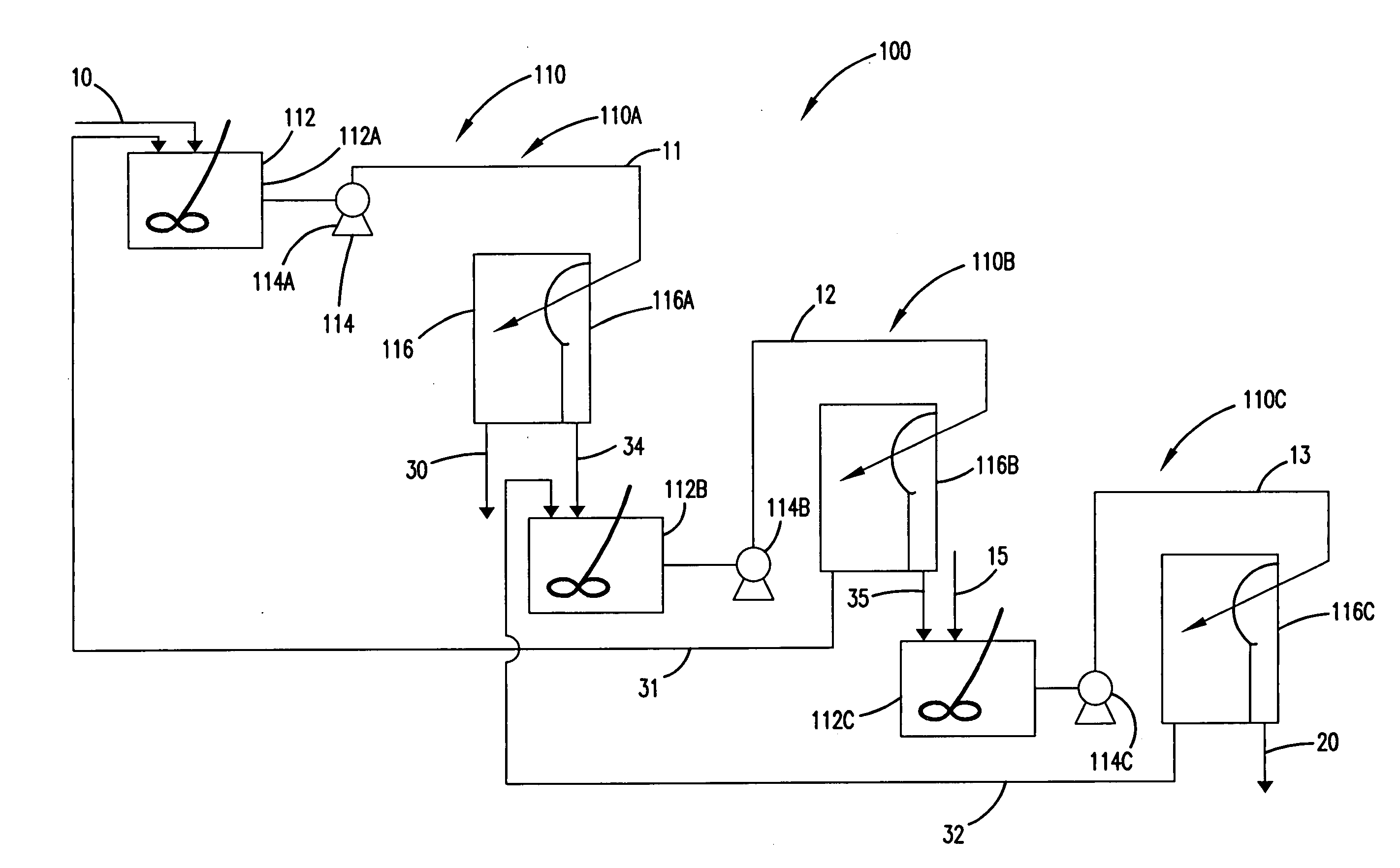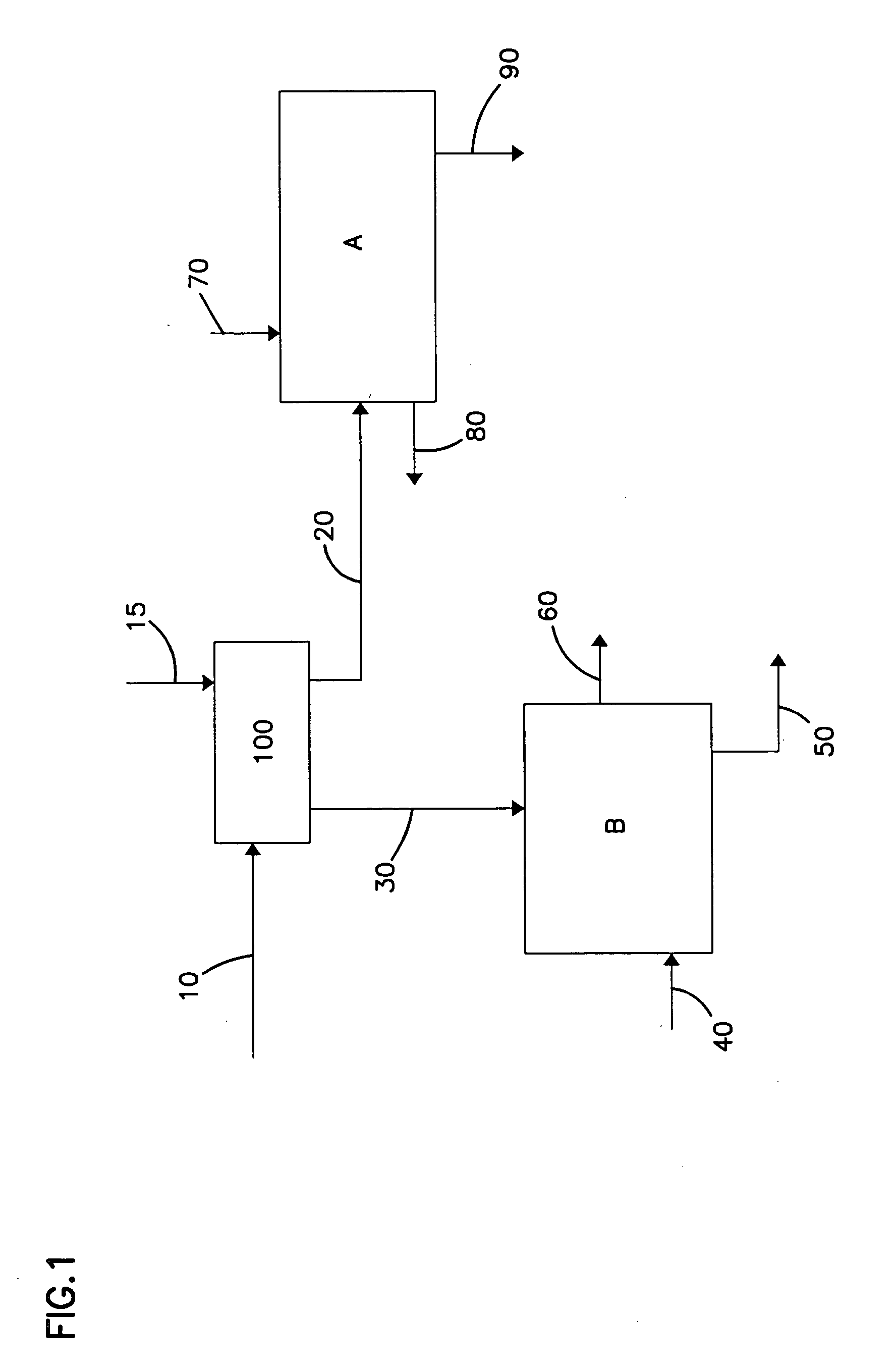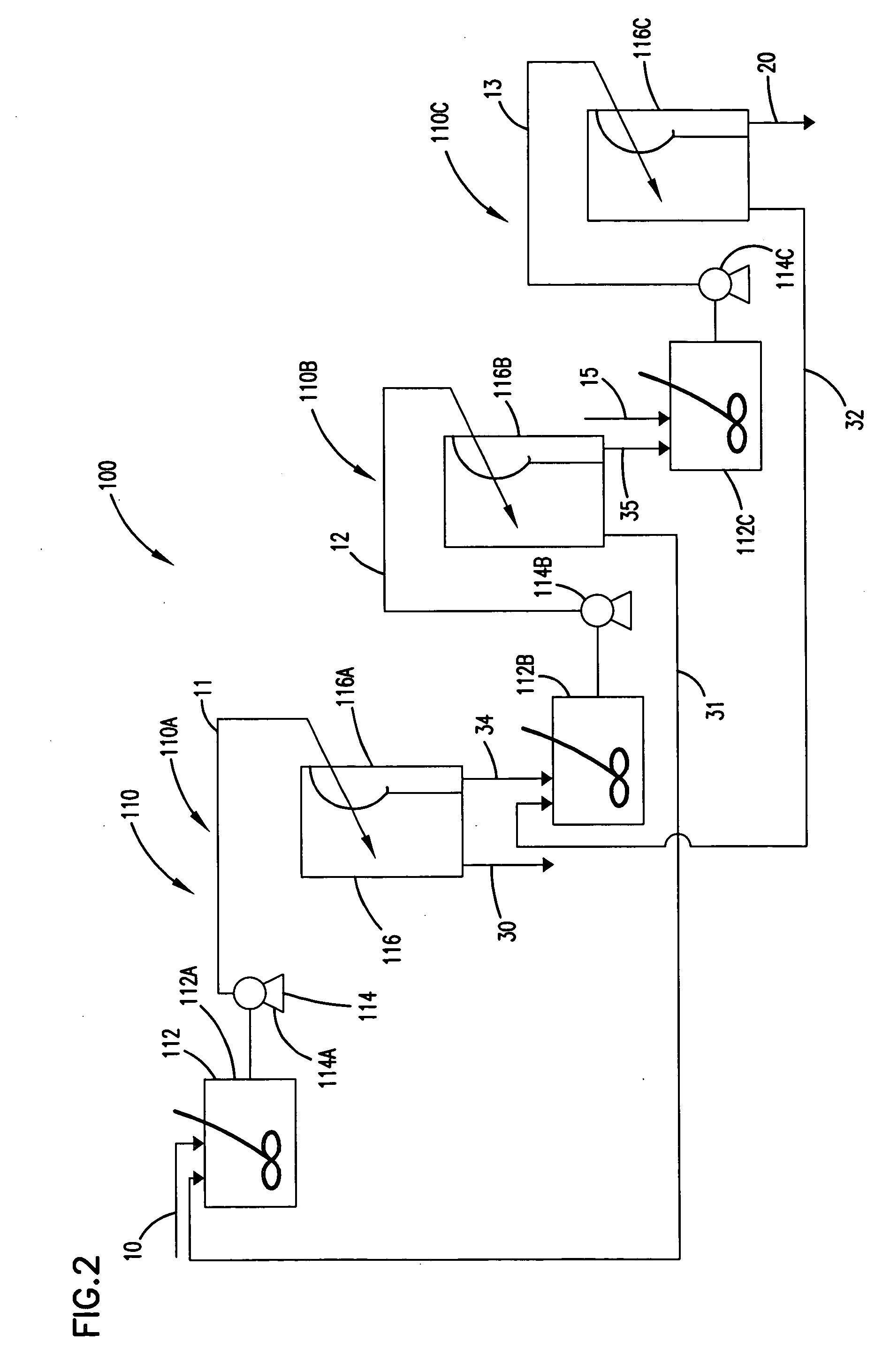System for liquid extraction, and methods
a liquid extraction and liquid technology, applied in beer fermentation, water/sewage treatment, dry solid materials, etc., can solve the problems of large residual water with the solids, large amount of residual water may remain, and the recovery of pure, or fairly pure ethanol, etc., to facilitate the separation of water, and facilitate the removal of water
- Summary
- Abstract
- Description
- Claims
- Application Information
AI Technical Summary
Benefits of technology
Problems solved by technology
Method used
Image
Examples
Embodiment Construction
[0028] As provided above, the invention is directed to processes for separating water from solids by utilizing at least two solvents. The at least two solvents can be applied to the solids either sequentially or step-wise (i.e., one after the other), or mixed together.
[0029] The process uses a first solvent to displace the water from the interstitial spaces in the solids. This first solvent, having a lower heat of vaporization and boiling point than the water, is easier to remove from the solids than water. A second solvent is used to displace the first solvent from the solids. The second solvent has a lower heat of vaporization and boiling point than the first solvent. The second solvent can be introduced to the solids subsequent to introducing the first solvent, or concurrent with the first solvent.
[0030] The first solvent is preferably soluble in water but does not form an azeotropic mixture with water. An azeotropic mixture is a mixture of two or more substances that behaves l...
PUM
| Property | Measurement | Unit |
|---|---|---|
| Fraction | aaaaa | aaaaa |
| Fraction | aaaaa | aaaaa |
| Temperature | aaaaa | aaaaa |
Abstract
Description
Claims
Application Information
 Login to View More
Login to View More - R&D
- Intellectual Property
- Life Sciences
- Materials
- Tech Scout
- Unparalleled Data Quality
- Higher Quality Content
- 60% Fewer Hallucinations
Browse by: Latest US Patents, China's latest patents, Technical Efficacy Thesaurus, Application Domain, Technology Topic, Popular Technical Reports.
© 2025 PatSnap. All rights reserved.Legal|Privacy policy|Modern Slavery Act Transparency Statement|Sitemap|About US| Contact US: help@patsnap.com



